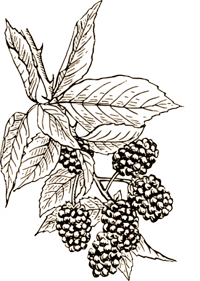Michaelmas, or the Feast of Michael and All Angels, is celebrated on September 29 and is associated with the beginning of autumn and the shortening of days; in England, it is one of the “quarter days.”
There are traditionally four “quarter days” in a year (Lady Day (25th March), Midsummer (24th June), Michaelmas (29th September) and Christmas (25th December)). It used to be said that harvest had to be completed by Michaelmas, marking of the end of the productive season and the beginning of the new cycle of farming. It was the time at which new servants were hired or land was exchanged and debts were paid. Thus Michaelmas became the time for electing magistrates and also the beginning of legal and university terms.
The celebration of Michaelmas is associated with encouraging protection during the darkening, colder months. It was believed that negative forces were stronger in darkness and so families would require protection.
Traditionally, in the British Isles, a fattened goose, fed on the stubble from the fields after the harvest, is eaten to protect against financial need in the next year; and as the saying goes:
“Eat a goose on Michaelmas Day,
Want not for money all the year”.
The day was also known as “Goose Day” and “goose fairs” were held. Even now, the famous Nottingham Goose Fair is still held on or around the 3rd of October. Part of the reason goose is eaten is that it was said that when Queen Elizabeth I heard of the defeat of the Armada, she was dining on goose and resolved to eat it on Michaelmas Day. Others followed suit.
The custom of celebrating Michaelmas Day as the last day of harvest was broken when Henry VIII split from the Catholic Church; instead, it is Harvest Festival that is celebrated now.
St Michael is also the patron saint of horses and horsemen. This could explain one of the ancient Scottish traditions that used to be practiced on Michaelmas Day. Horse racing competitions in the local communities would be held and small prizes won. However, with a twist, it was the only time at which a neighbor’s horse could be taken lawfully the night  before and ridden for the entirety of the day, as long as the animal was returned safely!
before and ridden for the entirety of the day, as long as the animal was returned safely!
In British folklore, Old Michaelmas Day, 10th October, is the last day that blackberries could be picked. It is said that on this day, when Lucifer was expelled from Heaven, he fell from the skies, straight onto a blackberry bush. He then cursed the fruit, scorched them with his fiery breath, spat and stamped on them and made them unfit for consumption!
And so the Irish saying goes: “On Michaelmas Day the devil puts his foot on blackberries”.
The Michaelmas Daisy
 The Michaelmas Daisy, which flowers between late August and early October, provides color and warmth to gardens at a time when the majority of flowers are coming to an end. As suggested by the saying below, the daisy is probably associated with this celebration because, as mentioned previously, St Michael is celebrated as a protector from darkness and evil, just as the daisy fights against the advancing gloom of Autumn and Winter.
The Michaelmas Daisy, which flowers between late August and early October, provides color and warmth to gardens at a time when the majority of flowers are coming to an end. As suggested by the saying below, the daisy is probably associated with this celebration because, as mentioned previously, St Michael is celebrated as a protector from darkness and evil, just as the daisy fights against the advancing gloom of Autumn and Winter.
“The Michaelmas Daisies, among dede weeds,
Bloom for St Michael’s valorous deeds.
And seems the last of flowers that stood,
Till the feast of St. Simon and St. Jude.”
(The Feast of St. Simon and Jude is 28 October)
The act of giving a Michaelmas Daisy symbolizes saying farewell, perhaps in the same way as Michaelmas Day is seen to say farewell to the productive year and welcome in the new cycle.
. . . . . . . . . . . . . . . . . . . .
Our Friends at Irish Culture and Customs offer a wealth of info about Michaelmas in Ireland, including traditions and recipes Their site is well-worth a visit for all things Irish.


